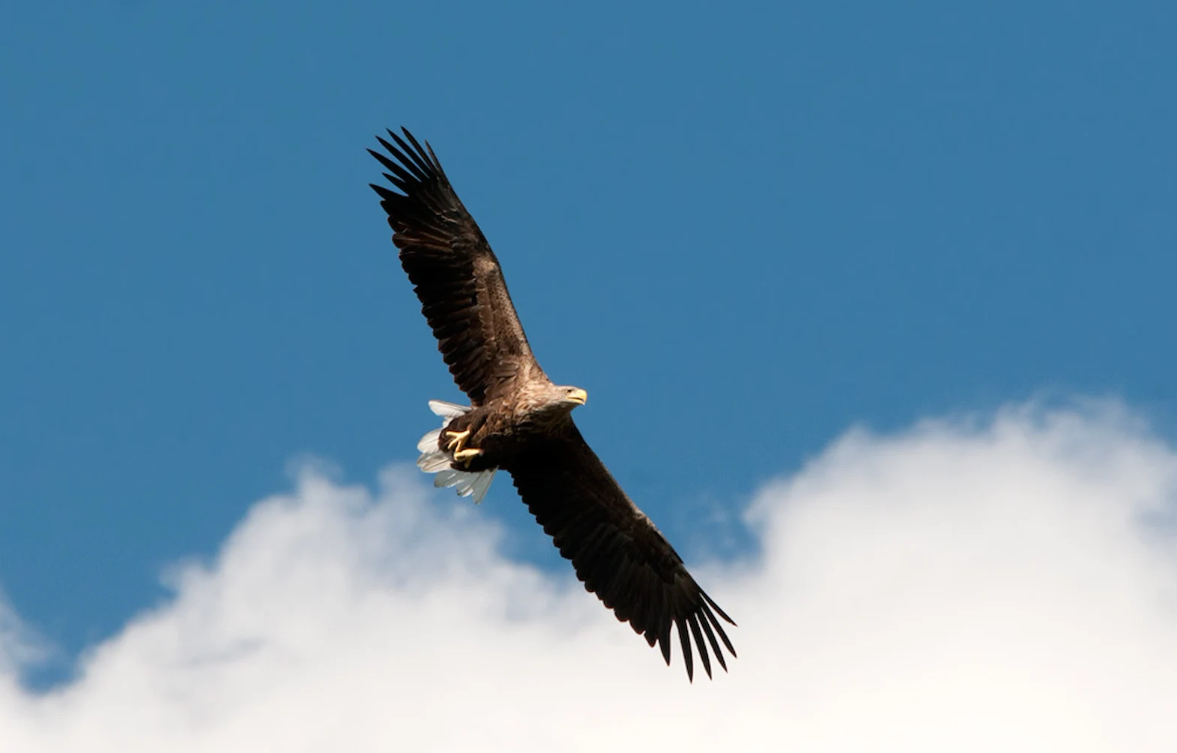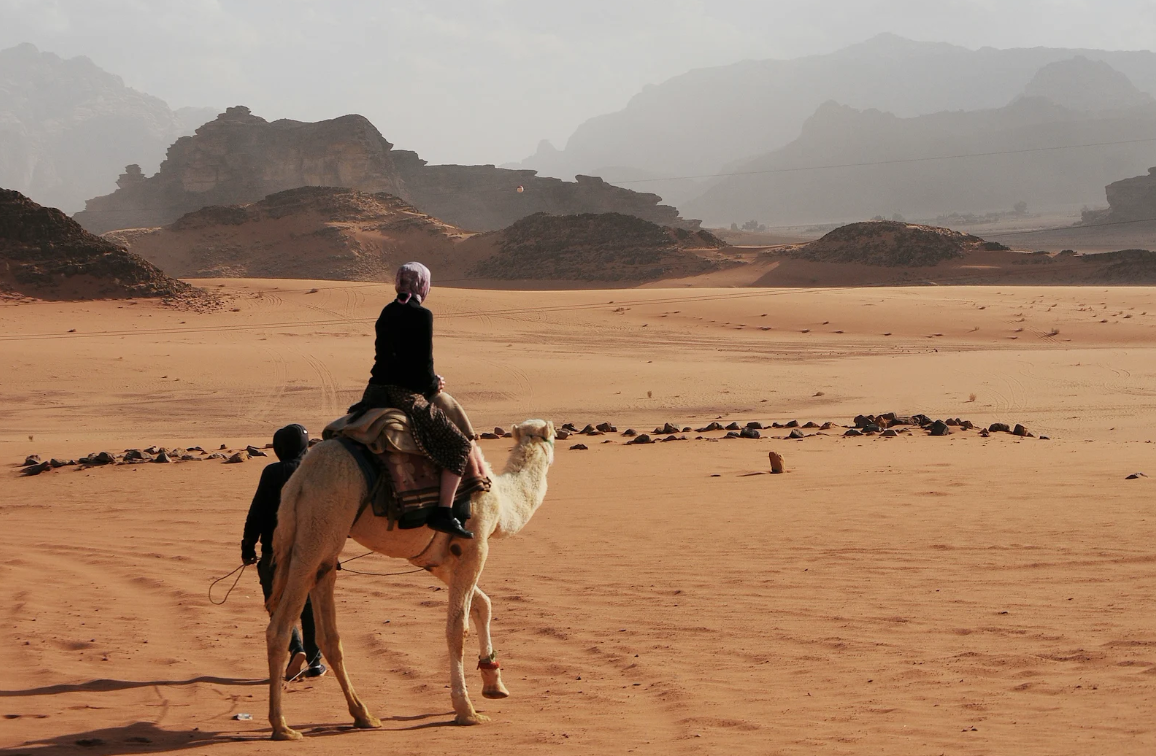Along ancient routes
Safeguarding Migratory Soaring Birds Along the Rift Valley/Red Sea Flyway
Imagine departing on a worldwide trip with your only means of navigation being instinct. To an earthbound species like humans, bird migration is nothing short of miraculous.
Consummate travellers, birds migrate along ancient flight routes, traversing continents and overflying oceans.
By way of example, every year Egyptian Vultures make a round trip of around 7,000km from breeding areas in Europe to their winter grounds in sub-Saharan Africa. The white stork is another long-distance migrant; demonstrating a steadfast loyalty to its breeding grounds and to its partner, they spend their summers in Europe, and fly to central or southern Africa for the winter.
In the heart of the Rift Valley/Red Sea flyway, where continents converge and migratory pathways intertwine, an important initiative is now underway.
Amidst the rugged beauty of the varied landscape lies a corridor crucial for the survival of millions of migratory soaring birds, as they embark on their multi-thousand kilometre journey between their summer breeding and winter sheltering grounds.
Ensuring safe passage
This is a tale of collaboration and conservation united by their avidity for avifauna.
At the helm of this endeavour is a Global Environment Facility-financed project led by UNDP Jordan. With a vision commensurate with the challenges, the project has set out to transform the landscape, not just physically, but also socially and economically.
In the vast expanse of the Rift Valley/Red Sea flyway, where azure waters meet golden sands, over 1.5 million birds – representing 37 species, five of whom are globally threatened - take flight each year. Among them are species on the brink of extinction, their survival hanging in the balance. Against the backdrop of this natural wonder, human activities have cast a shadow of threat upon these winged travellers.
In the realm of energy, where progress and preservation often clash, innovative solutions are taking flight. Bird-friendly infrastructure and renewable energy sources are key tools in the effort to ensure avian futures. Here, the project's impact extends beyond conservation, offering a blueprint for sustainable development in harmony with nature.
Hunting, once a tradition woven into the fabric of local culture, now poses a grave risk to the survival of migratory soaring birds. Yet, through the concerted efforts of conservationists and communities, a new narrative is emerging. Sustainable hunting practices are taking root, guided by regulations crafted with conservation at heart. Together, they are rewriting the story of coexistence between man and bird.
Power lines are one of the major causes of unnatural death for birds across the African-Eurasian migratory flyway, since soaring birds tend to perch or nest on the electricity poles, putting them at high risk of electrocution. Collision with wind turbines is an additional source of death and injury of birds. But if decision-makers incorporate wildlife conservation into the planning stage of their projects, they can easily avert this devastation. For example, locating energy infrastructure far from migration flight paths will make these routes infinitely safer for soaring birds.
Tourism, too, has found its place in this narrative of conservation. Where once footprints left scars upon pristine landscapes, eco-friendly practices now reign supreme. Through partnerships forged between tour operators and conservationists, a new ethos of responsible tourism has emerged, where the marvels of nature are revered and respected.
Across the fertile plains and verdant valleys of the agricultural sector, a transformation is underway. Here, amidst fields teeming with life, conservation and cultivation find common ground. Wildlife-friendly farming practices and land-use planning harmonize with the needs of both man and bird, ensuring that the bounties of the land are shared equitably.
“Osama Alnouri, Regional Flyway Facility Coordinator of the Migratory Soaring Birds project notes that “it is substantial to mainstream migratory soaring bird considerations into the productive sectors along the flyway that pose the greatest risk to the safe migration of these birds – hunting, energy, agriculture, and waste management.””
Amidst the rubble of the waste management sector, a phoenix is rising from the ashes. Waste reduction and recycling initiatives breathe new life into landscapes once marred by pollution.
Here, the project's impact is most visible, as communities embrace a circular economy approach, where waste is not just managed but transformed into opportunities for conservation. Roads leading to landfills are being lined with solar-powered lights, ensconced in a green belt of trees, enhancing environmental and health conditions for surrounding communities and transiting birds.
“In the words of Randa Aboul-Hosn, UNDP Resident Representative in Jordan: the emblematic work in this project ‘transcends the mere exchange of experiences; it is an earnest testament to our collective commitment to building a sustainable future. The outcomes of our discussions will undoubtedly contribute to the holistic development and implementation of national biodiversity strategies and action plans.’”
Amidst the triumphs and transformations, remnant challenges linger. The road ahead is fraught with obstacles, from political inertia to economic imperatives. But here, in the heart of the Rift Valley/Red Sea flyway, hope takes wing. For in the collective resolve of communities and conservationists lies the power to overcome even the greatest of challenges.
This exemplary initiative, already globally recognized as a GEF best practice, received the prestigious ‘Good Practice of the Year’ award from the EU Renewables Grid Initiative in Jordan.
The project aims to bring migratory bird protection into the mainstream of key production sectors including hunting, energy, waste management, tourism and agriculture along the Rift Valley / Red Sea migration route. Raise awareness of migration routes and change the social and cultural behaviors of the target groups, policy makers and the general public threatening key industry MSB to establish and promote the MSB migration routes concept, design and target publicity and media / social media activities for the issue of MSB migration routes. Turning the coordination of the Migratory Species Convention (CMS) and the African-Eurasian Waterbird Agreement (AEWA) into industry activities and actions
Strengthen the capacity of national partners to develop and promote migration route concepts, respond to new opportunities, and monitor content standards. Strengthen the capacity of national governments and private sector agencies to understand, promote and adopt "migration route friendly" practices. Develop technical content and guidelines related to MSB, especially for targeted key industries (energy, agriculture and pesticide use, hunting, tourism and waste management). Developed selected learning and knowledge management products, developed coherent financial plans for RFF, including financial strategies for key financing areas, sources of financing, financing gaps, financial strategies for migration route protection activities, and conducted targeted publicity and fundraising at international events (e. g., BirdLife International Annual Bird Fair) through BirdLife International.













